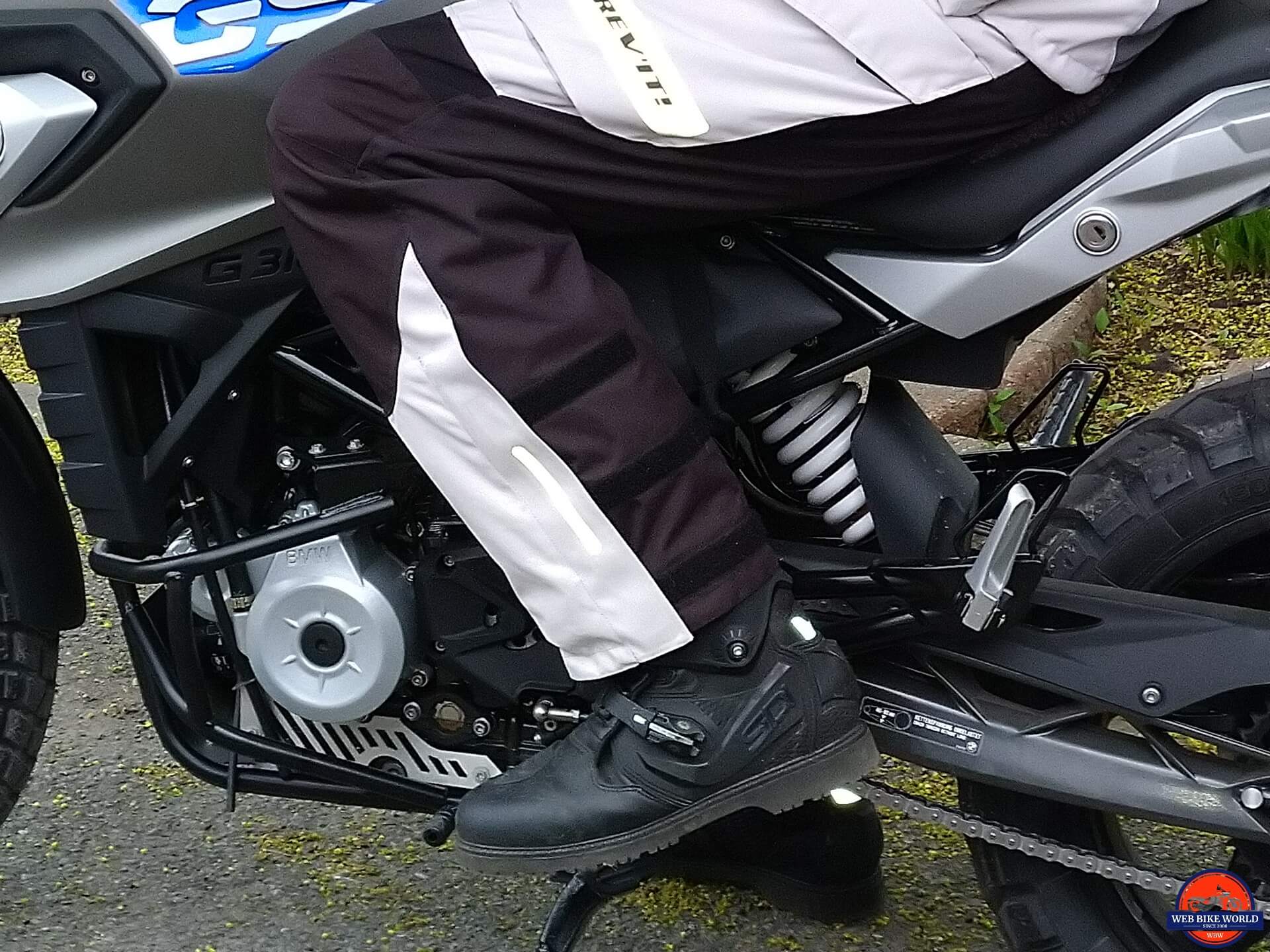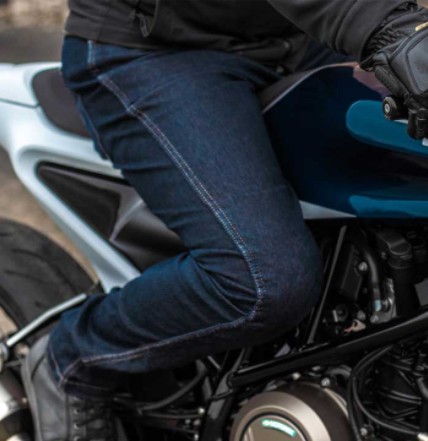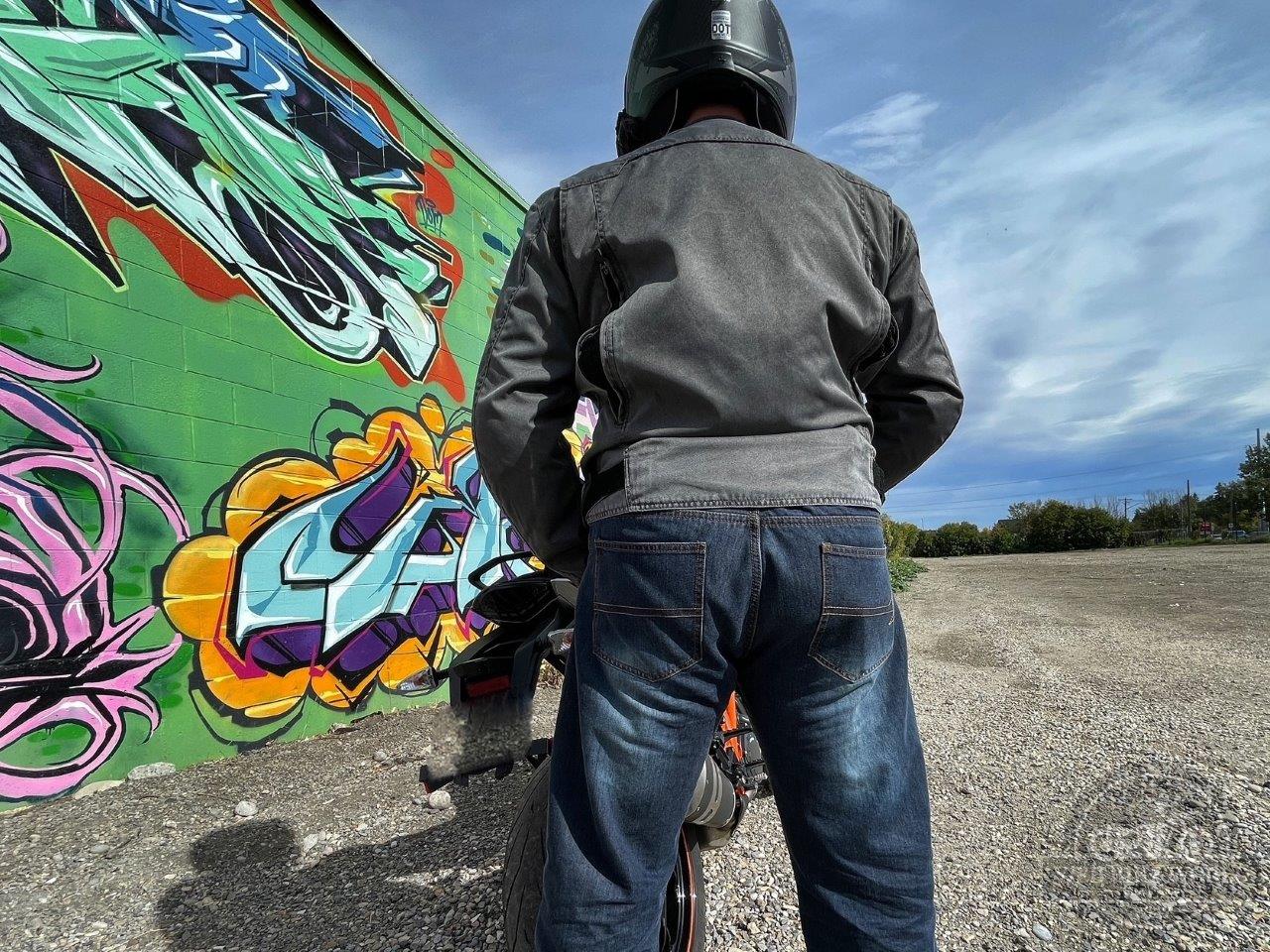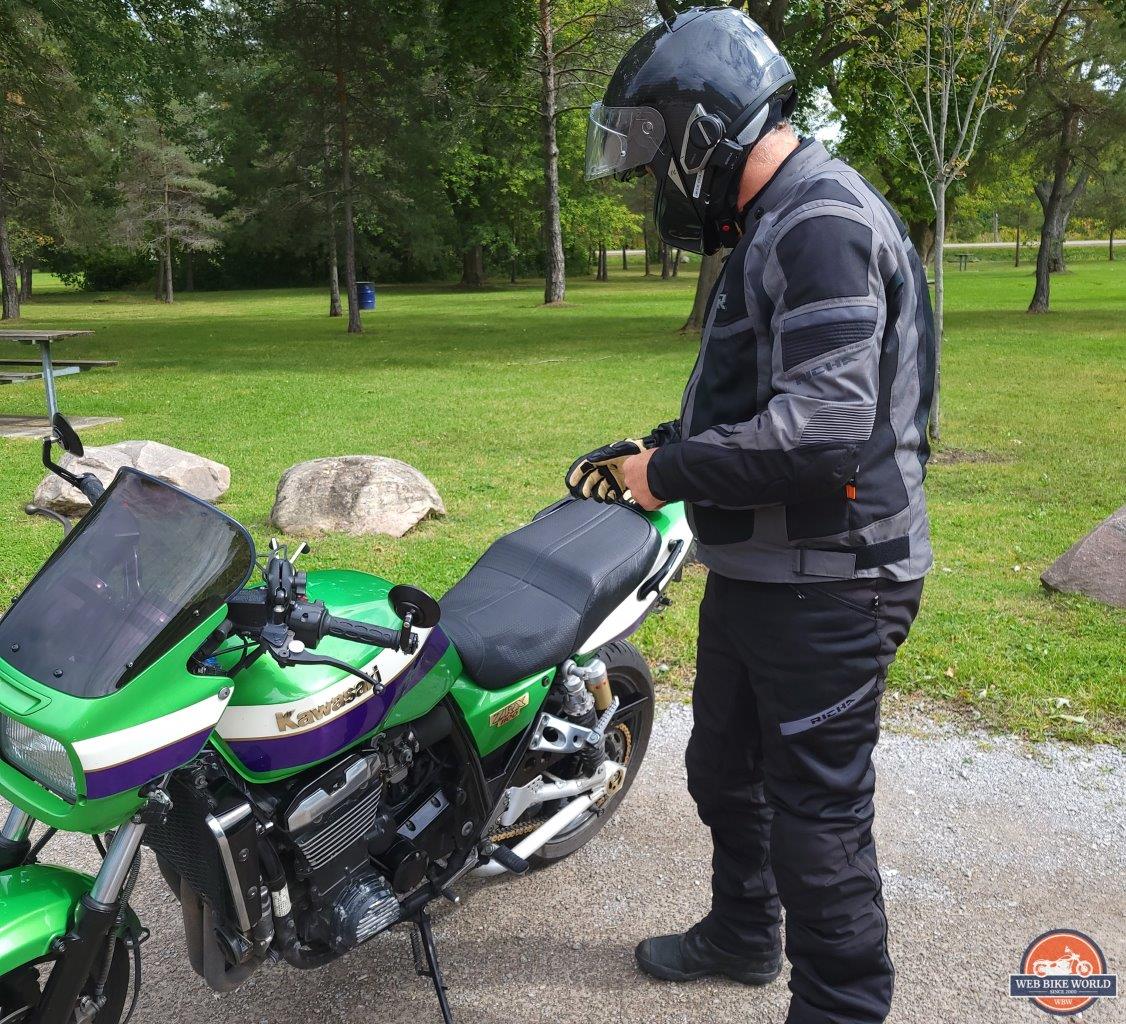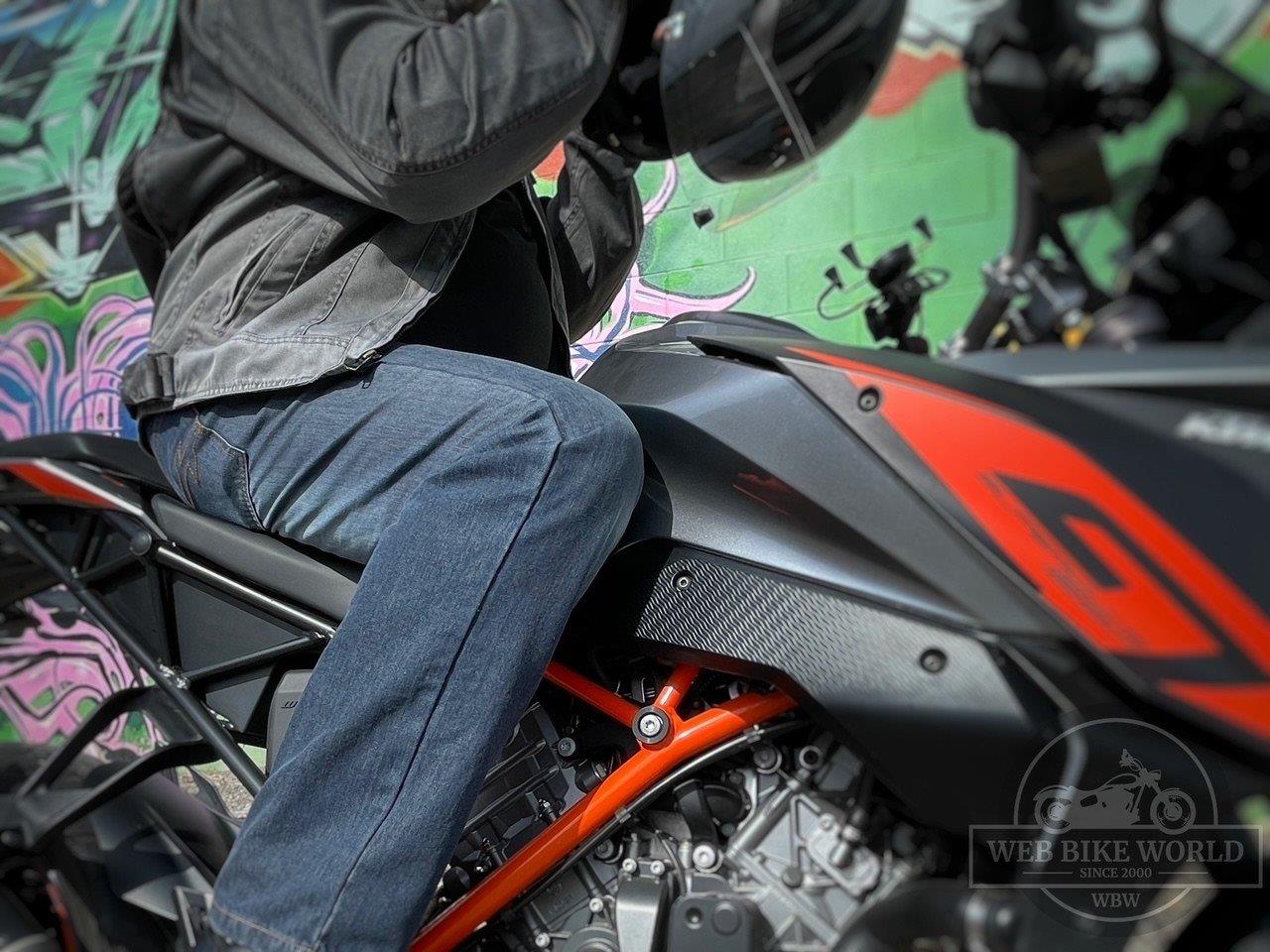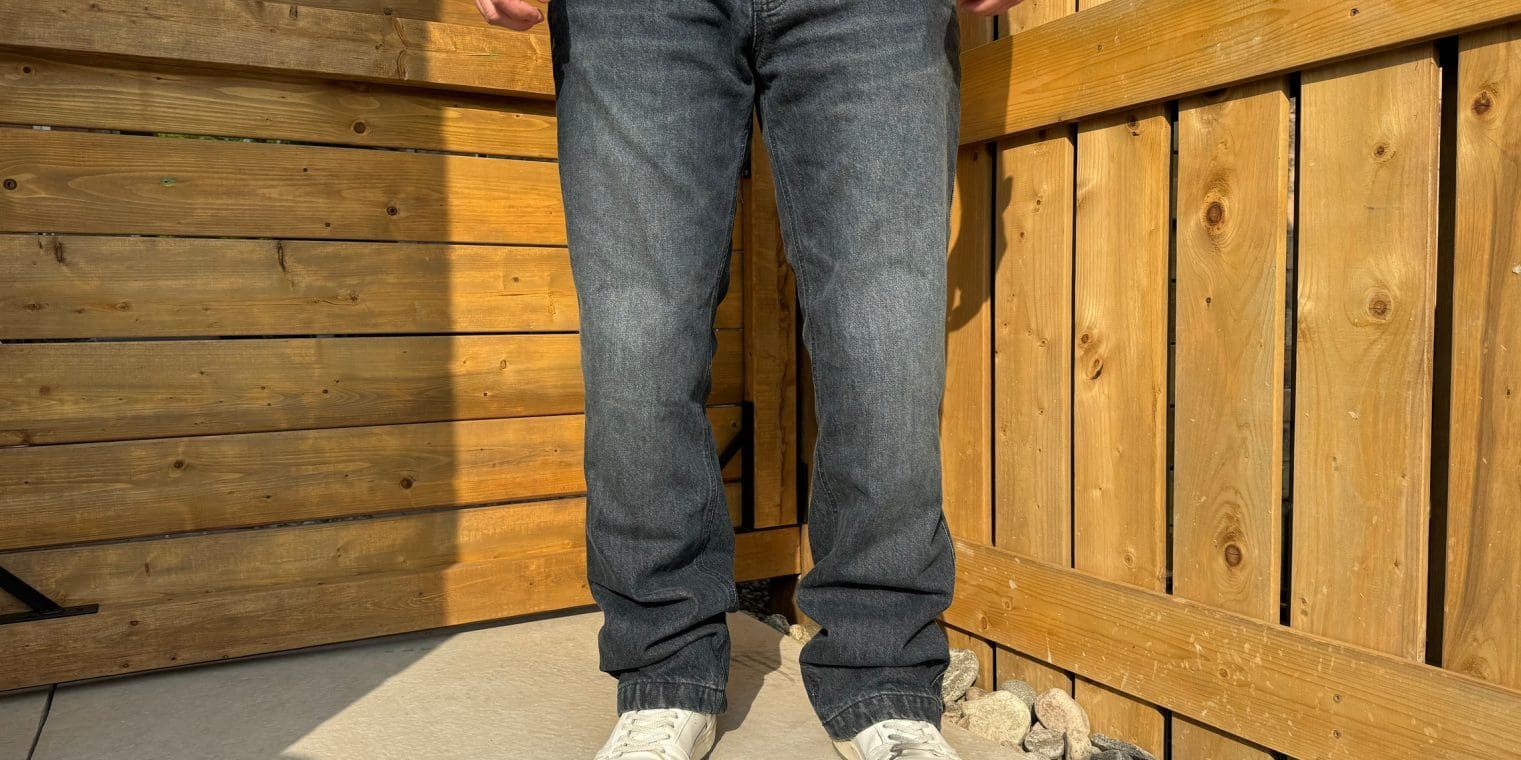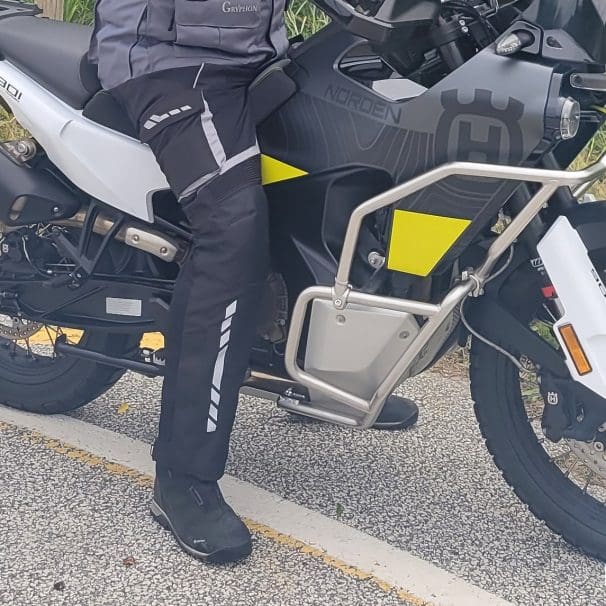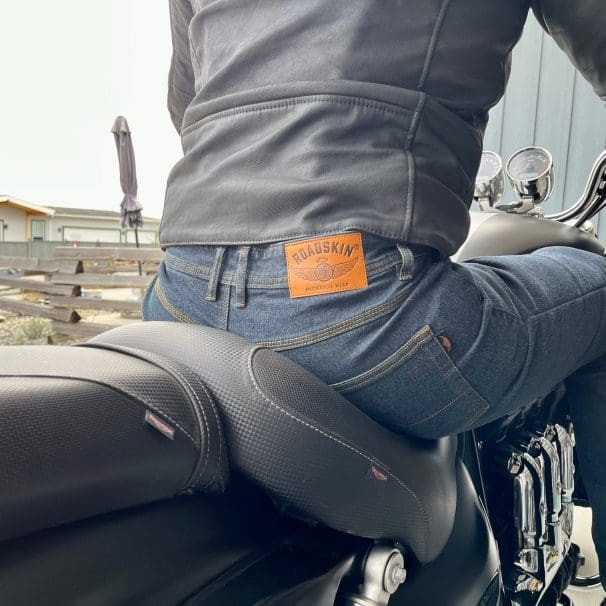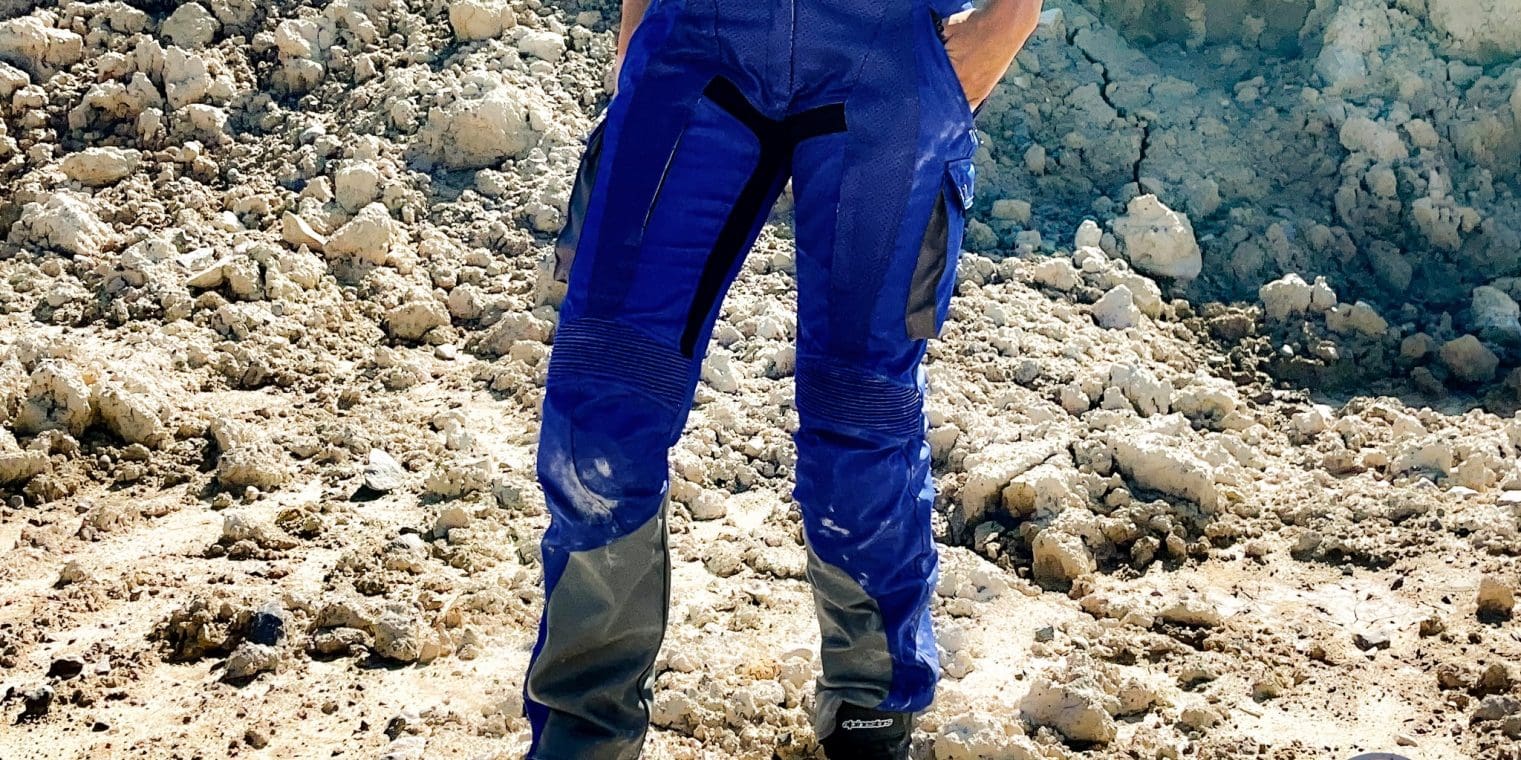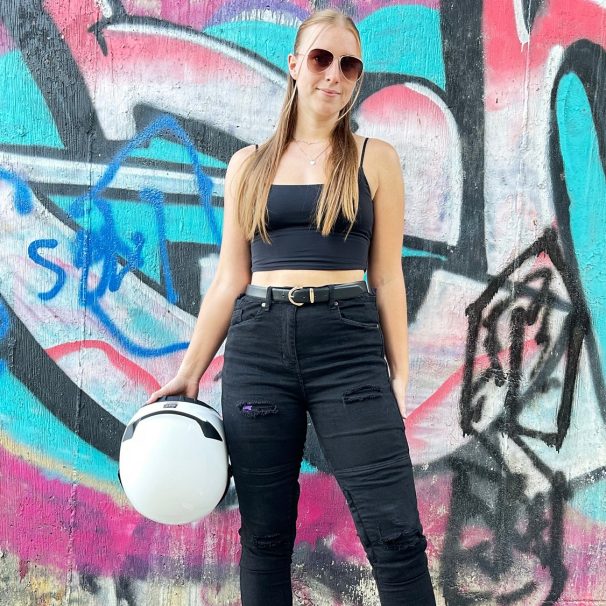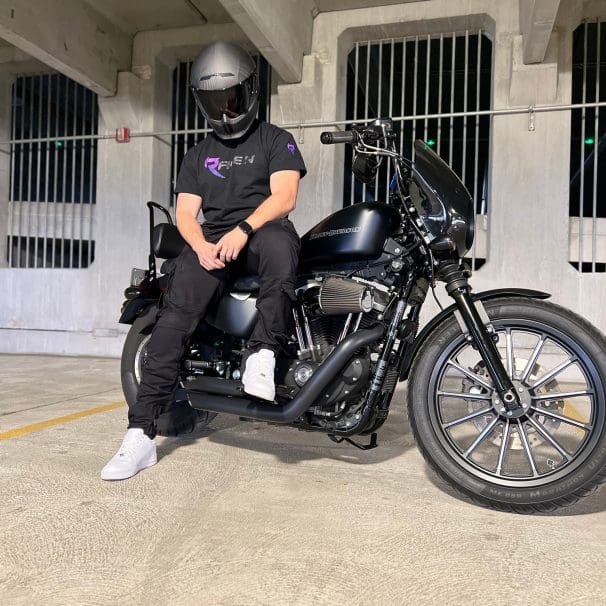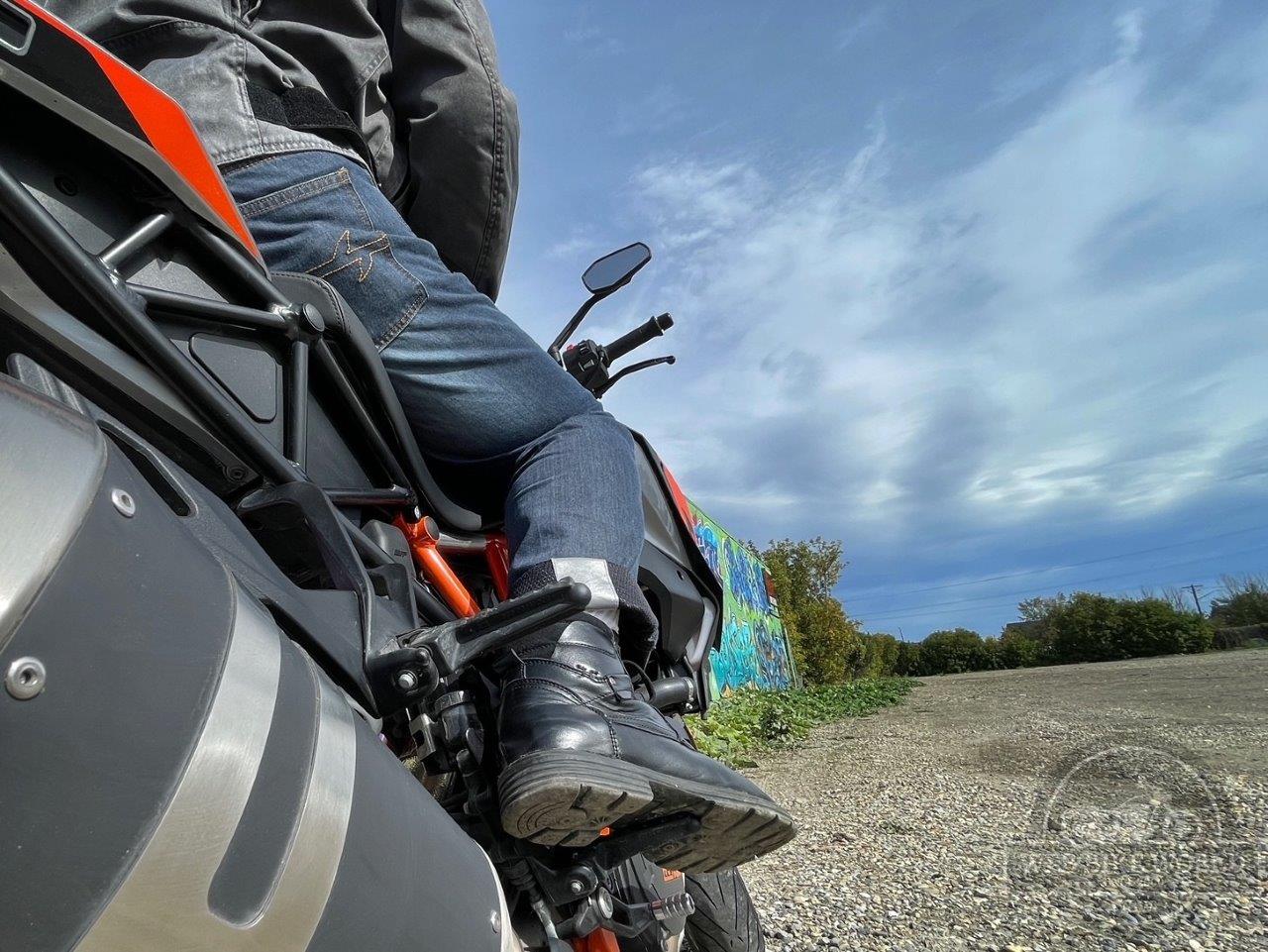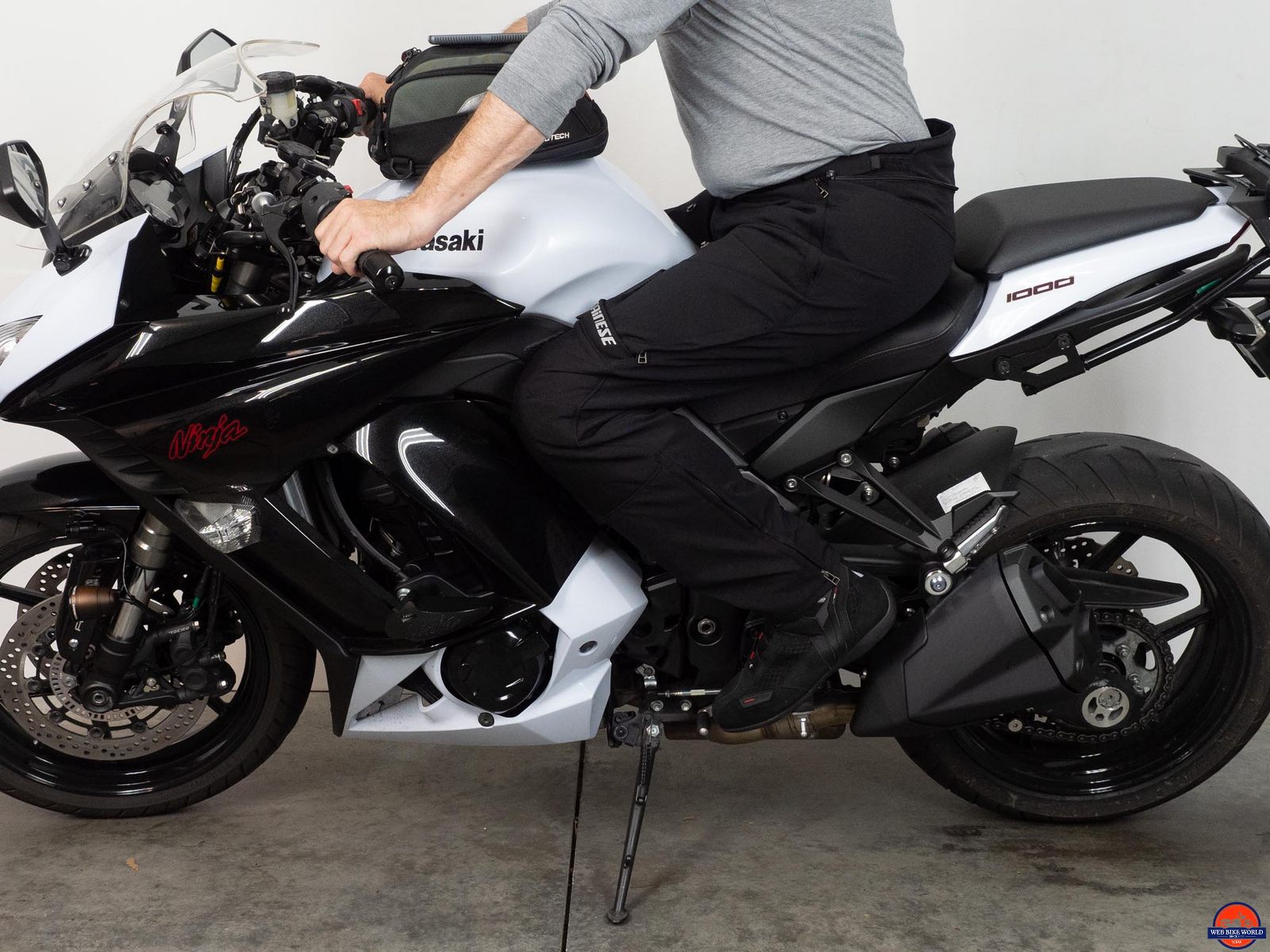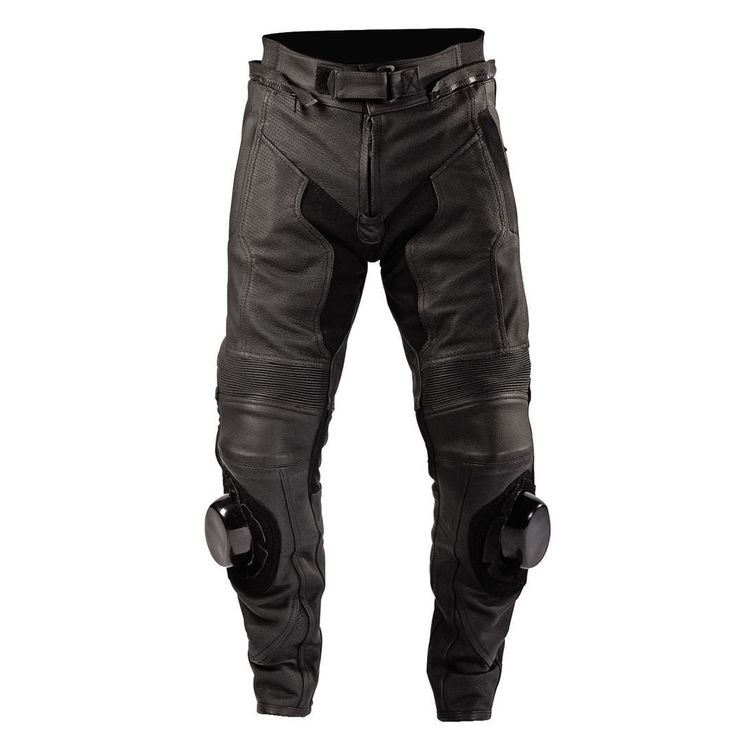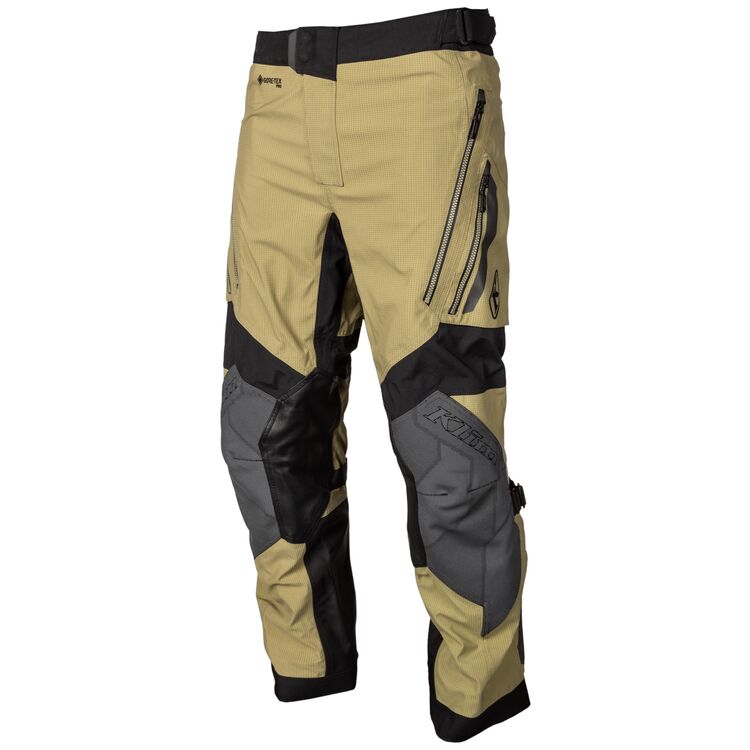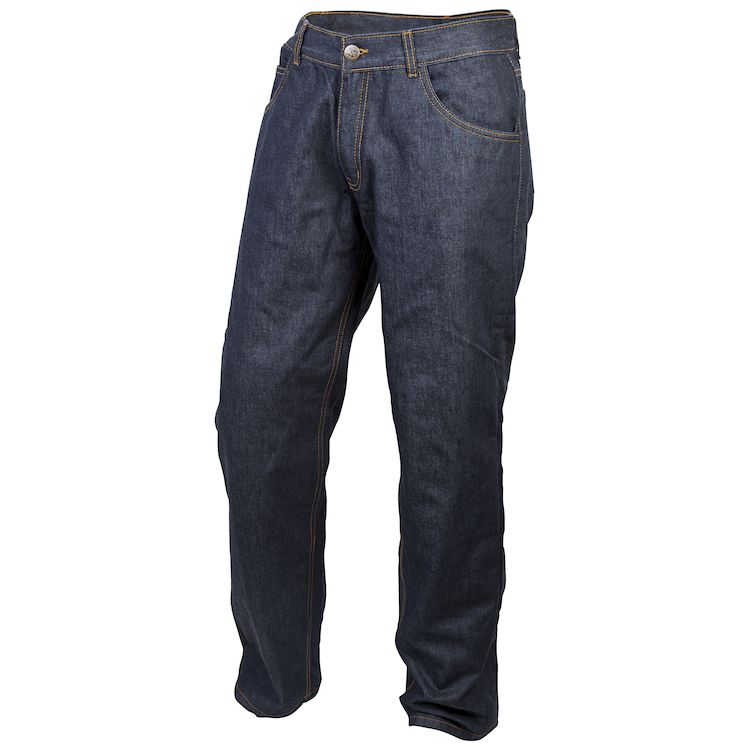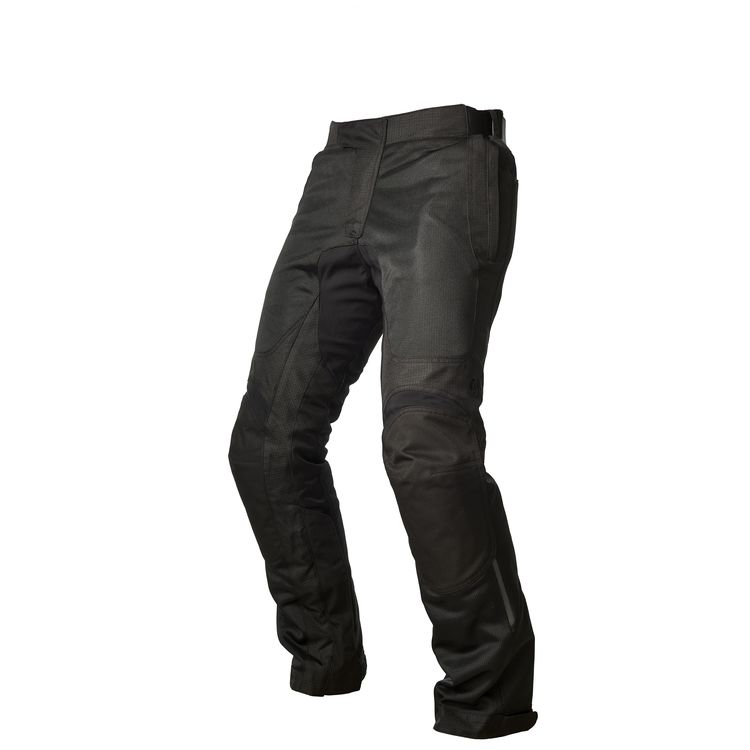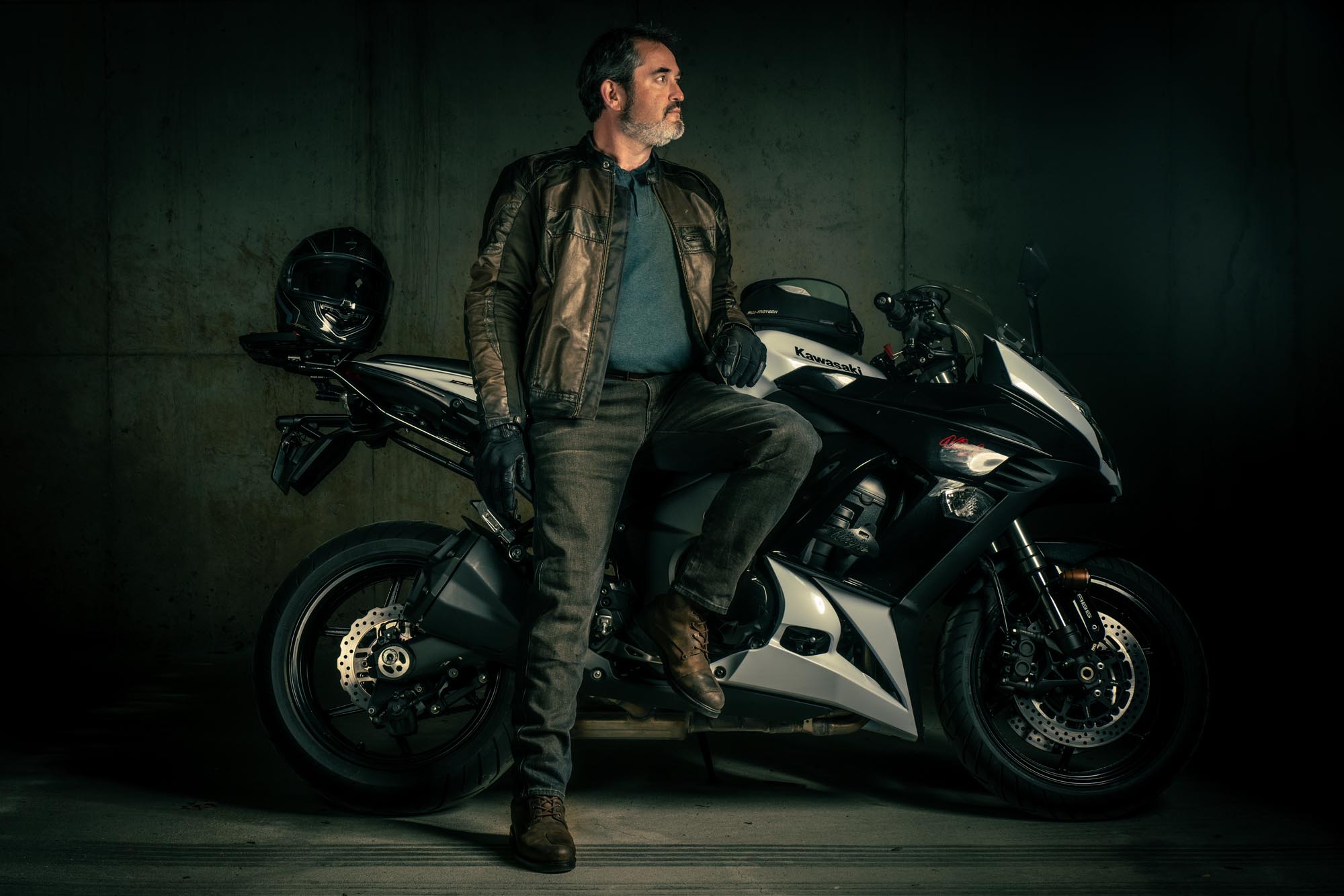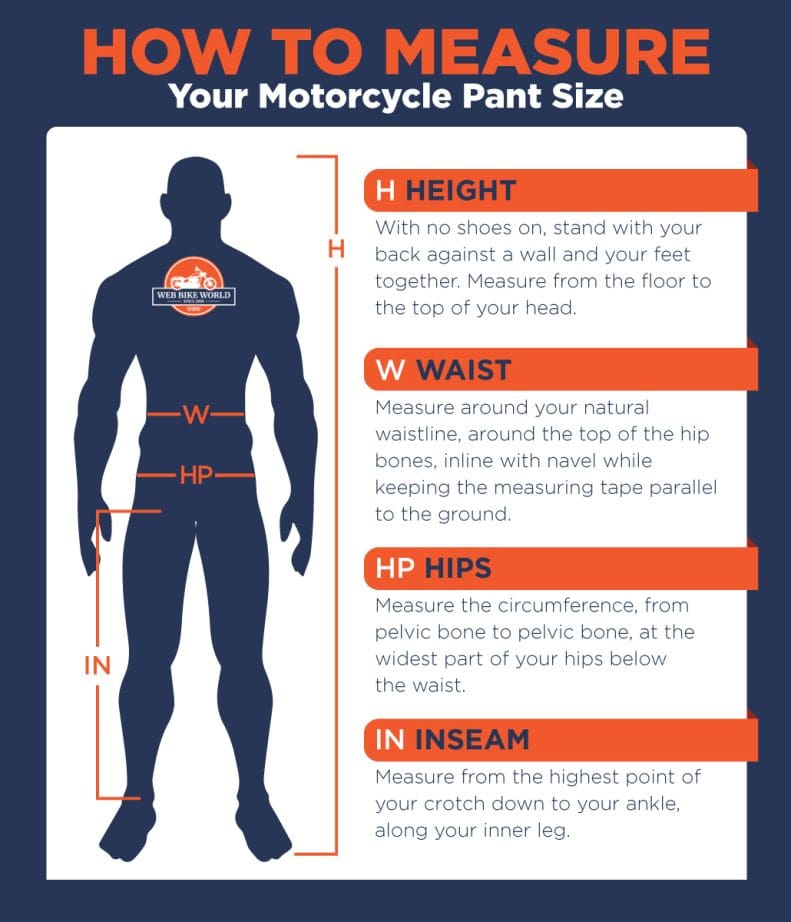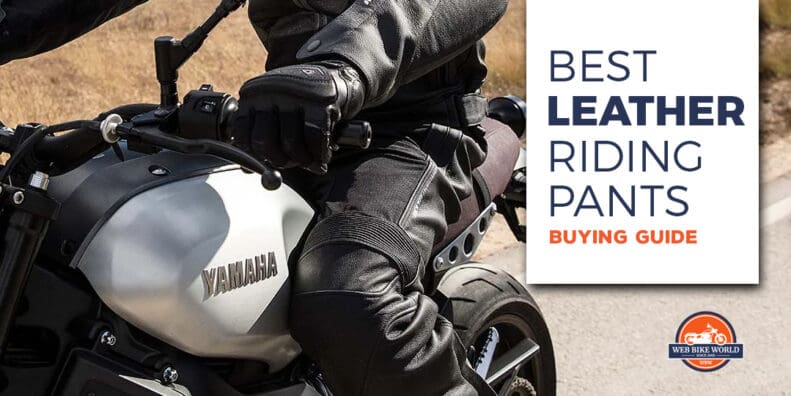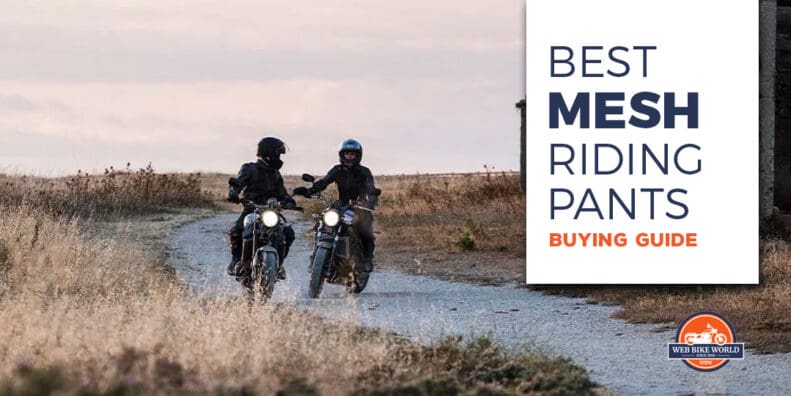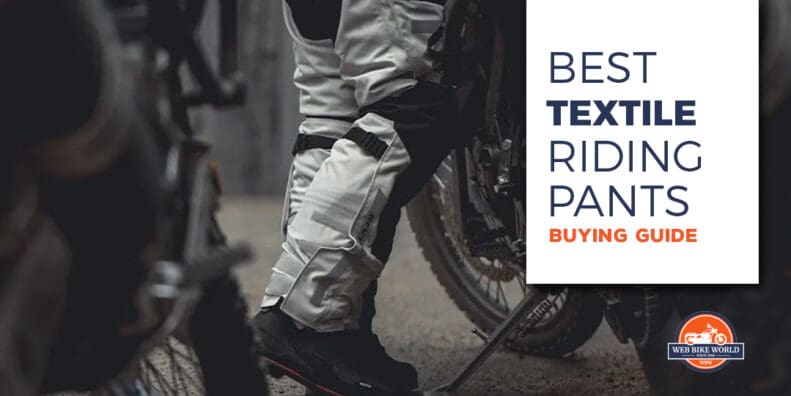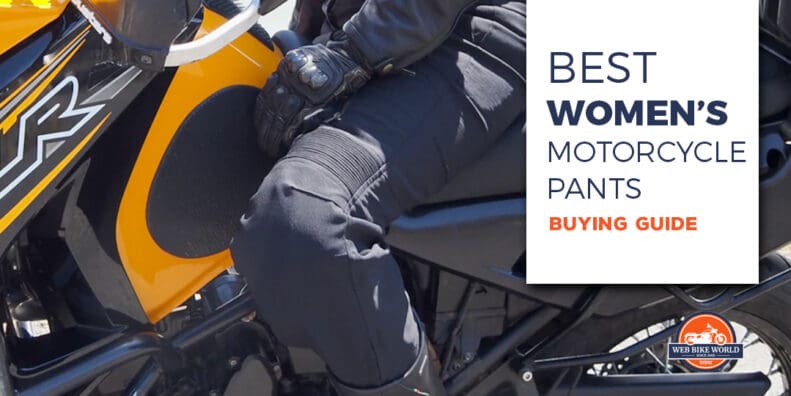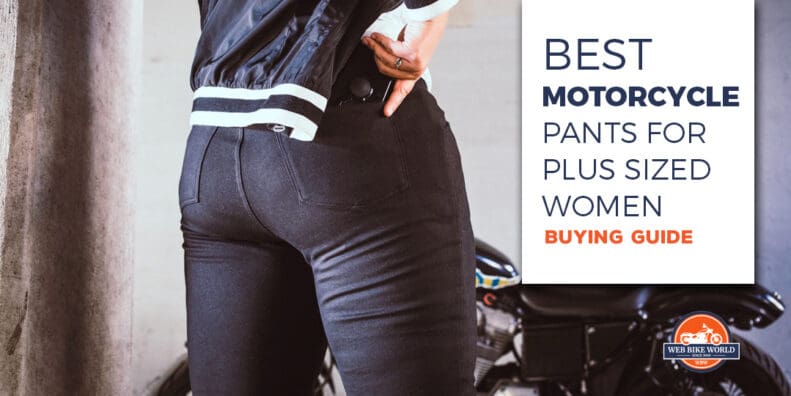Feeling overwhelmed with all the choices of riding pants?
You're in the right place.
Our Moto Pants Guide will help you find the right type, fit, style, and price to cover your butt.
Why We Created This Guide
Protecting your lower body is often the overlooked item of protective wear, or the last item purchased. There is often the attitude that jeans will be fine, and while they might hold up to a low-speed fall in the dirt, beyond that you are basically naked below the waist.
We have been reviewing motorcycle gear for over 20 years and are the most reliable source of unbiased advice. To date, we have reviewed more than 2,500 pieces of riding apparel, accessories, and motorcycle parts. When our team tests moto pants, we wear them, ride in them, and beat them up for up to six weeks to understand how they perform in the real world. Then we tell you what we think, the good and the bad, so you can make better buying decisions.
To create this moto pants buyers guide, we sat down and asked ourselves: what makes a pair "good", what makes a pair "great", and what are the most important things to look for when buying new pants? Answering those questions and providing a list of recommendations took plenty of research, referencing, and collaboration. We connected with major brands, motorcycle experts, and, of course, our comprehensive library of motorcycle pants reviews.
Latest Motorcycle Pant Reviews
Hands-on, in-depth reviews. See all our motorcycle pant reviews.
What’s In A Pair Of Pants?
Pants offer much-needed abrasion protection for every rider.
What do they offer? They can literally save your ass! I would say that riding pants might be the most misunderstood piece of protective gear in all the motorcycle land.
Beyond considering the protection riding pants can provide in the case of an accident when riding, what else makes them so worth while. Riding pants can protect your legs from the environment in general. Regular denim jeans are not your friend when it rains, or on those hot days. There are hot weather pants, cold weather pants. Pants that can switch and cover both.
I have talked to riders who think you only want pants on the track or if you ride off road, and sure those are certainly applications where good riding pants offer a huge benefit, have you ever had a rock hit your leg on the highway? Ouch if you have jeans on, but the protection in the right set of pants makes this a non issue.
What to Consider When Shopping Pants
Safety
Our team here at wBW stands by the philosophy of riding ATGATT (All The Gear All The Time). A fall off a motorcycle inevitably means some amount of slide will occur, and I am sure everyone of us is familiar with the feeling of skinned flesh against pavement or even the dirt. More than once while growing up, I tore open a pair of jeans in a fall, usually off my bicycle but many times due to my two left feet. The consequences of riding unprotected can be huge.
The construction of riding pants, of all types, starts with abrasion resistance. How long will they last before failing during a slide. Rather than flood your brain with all the minutia on garment ratings and certifications I will try to keep it simple. In North America, as far as I am aware, there is no specific accepted certification for abrasion and impact resistance. Many motorcycle clothing manufacturers adhere to CE (European) standards for wear, abrasion, impact protection, etc. The standard EN 17092 was created to cover PPE for leisure motorcycle use. If the pants you are looking at have the CE-EN 17092 tag you can have faith knowing clothing that looks like protective motorcycle gear, actually is protective motorcycle gear. One level further with the CE standard, you will see classes and levels applied.
Class AAA/AA/A products that have both protection against impacts and abrasion.
Class B products only offer protection against abrasion.
Class C Over (CO) and C Under (CU) only holds one or more impact protectors and therefore only offers impact protection for the areas covered by the impact protectors that are included.
Level 1 or 2 - Used to describe abrasion resistance, and also separately for impact protection. 1 is good, 2 is better
I know, I gave you a bit of the minutia, sorry but it had to happen. If you have a general understanding of the terminology you can make sense of what you are looking at while shopping. Most manufacturers are producing quality gear, but they also never make it easy to understand their labels and protection levels offered. The more information they provide related to fabrics and impact protection, the easier to determine if your butt will be protected.
Type
Now that there is some understanding of the safety elements built into riding pants, what does a person actually need? That depends completely on what you ride, and where you ride. I will approach this assuming you are a newer rider getting gear for the first time, let’s look at what you ride.
You will certainly find crossover with gear, that works for different styles of motorcycles. If you are on a touring or cruiser bike you would look at many similar types of pants. The same can be said for motocross and ADV riders. Leather riding pants make a lot of sense for many riders, but you don’t really need sliders on your knees when riding a bagger, those leather styles make more sense in the sport bike world. I think you understand where I am going here.
Finally, consideration needs to be given to where you ride. Will most of your riding be on or off road? Hot and dry? Cold and wet? Long trips, or just to work and the pub? Are you the type to just cruise the street or do you have track days in your future? I am almost certain your answer will be a combination these factors.
For many types of riding you will not need level 2 armor or a Class AAA pair of pants, but they could be the difference maker if you plan to ride at the track, or do a lot off road, something to keep in mind.
Fit & Comfort
Thankfully modern fabrics mean gear that fits, looks great, and is actually comfortable. I still remember the first riding jeans I looked at, they made my Carhartts seems thin. Not anymore, now you would have a hard time even knowing the jeans were made for motorcycles, fully lined with Kevlar Aramid protection panels, and with armor that cannot be seen.
Shopping for riding pants means putting them on and then either sitting on your bike, or simulating your riding position. Knee and hip armor will change position between standing and riding stances, this can be very important if you alter between seated and standing positions during your rides. If you are on a cruiser or touring bike and you have highway pegs, consider pants that secure well to your boots or have a closure to stop them flapping or blowing up your leg, trust me it is annoying.
Many leather and some textile pants will have a bit of a break in period, but if moving is restricted try a size up. Leather pants often have mesh stretch panels and perforations to allow airflow, be aware of this depending on your climate.
Price
Wouldn’t the world be great if price really was no object? Even if you have a large budget, nobody likes wasting money, so I offer a few things to keep in mind. Look for value over actual price, and find the best value within your budget.
Leather will almost always be the highest price, but with all the textile products, it may not be the best value or the right choice considering your style of riding.
The highest priced pair of jeans often don’t provide any better protection. Jeans for riding are really not much different from fashion jeans, sometimes you pay a lot for a name and sometimes it is worth paying a bit more for that name. Look at material and construction for things like full lining or heavier stitching. These are indicators of higher performing products.
When comparing pants remember some come with removable liners, and some charge extra for them. Make sure you know what is included.
Try to keep this priority order in mind: suits your riding style / level of safety and performance / how cool they look / price.
If you keep these basics in mind you will be able to find excellent gear, within your budget, regardless of whether you are shopping online or in a store.
Leather Pants
The traditional material to protect your hide and ensure the classic biker style. If you race, this is your only choice at the track. There are many different types of leather; cow, goat, kangaroo, and many grades of leather; full-grain, top-grain, bonded.
Strengths
Excellent abrasion resistance.
Windproof, and good in cooler weather.
The right pair will last for years
Very durable
Cons
Not the most waterproof choice
Poor breathability makes hot days feel hotter
Finding the right fit can be much harder
More
Textile Pants
Modern man-made fabrics are constantly improving. These types of pants are often the best bang for the buck, it just always is very obvious you are wearing riding pants. Often price can actually indicate better materials.
Strengths
Widest range of prices and styles.
Often include stretchy panels for added comfort
Typically better pricing
Many have liners that make them into three season pants
Cons
Less about style and more about function
Tend to be baggier (flappy in the wind)
Don’t tend to last as long as leather
More
Denim Pants (Riding Jeans)
When you don’t want to look like you are wearing riding gear. Check what the protective lining is made from and how much coverage that lining provides.
Strengths
Wide range of styles and fits
Can be worn and hard to spot they are for riding
Still comfortable in the heat.
Easily washed
Cons
The least durable compared to the leather and textile
They are a sponge in the rain
Abrasion protection can vary widely between brands
Most require armor to be added
More
Mesh Pants
A subset of the textile group, mesh is meant to be the most breathable fabric. There is always a trade-off, and although mesh is fantastic, it won’t be the most durable.
Strengths
Very breathable and great on the hot days
Lightweight
Provide great dexterity, work well off-road
Often include stretchy panels
Cons
Not waterproof
Abrasion resistance can vary greatly with fabric
Check if the garment meets any crash safety standards
Confirm armor can be added.
More
Properly Fitting Riding Pants Are Lifesavers
(& More Comfortable, Too)
At this point in life, we should all have a good idea of what good-fitting pants feel like, without having your mom standing there grabbing at your waist half jerking you off your feet. Don’t act like I was the only one with a mom like this.
When it comes to riding pants you need to keep a couple of key points in mind,
How do they feel both standing and in the riding position?
Will I be wearing these over anything? If so try them on that way.
How do they feel with the liner in (if they have one)?
How do they fit over your riding boots?
Many of us are buying our gear online, if that is the case make sure you check the sizing guide from the brand you are purchasing. Manufacturers can be quite inconsistent with sizes, the first step is looking at the sizing guide they provide, but follow that up by checking the reviews. Often other purchasers will note how their purchase fit, and this can be helpful when choosing the size you need. Double-check if tall or short sizes are listed, it can be easy to miss this.
Be sure to give the description a good read for any product. Many textile, mesh, and leather pants have adjustable zones at the waist, perfect for fine-tuning the fit.
Lastly, make sure you know your own measurements. If you are thick in the thighs cause you never miss leg day, or you have very high footpegs that keep your legs very bent, these factors can change how pants fit when you are in the saddle. If you know this upfront it can help you weed through the choices and find your fit. This is a sample guide for measuring yourself for riding pants.
Materials, Ratings, And Armor Explained
When shelling out your hard-earned dollars it is very important to understand if you are actually getting better value or just snake oil.
Materials Used in Motorcycle Riding Pants
Leather is not always just leather, especially when it is synthetic. Leather can come from many types of animals; cow, goat, lamb, kangaroo, and they will offer different levels of abrasion resistance. Some companies are even making synthetic leathers. Our friends at Revzilla provide a great breakdown, but the price and the armor rating will go a long way to helping you gauge the quality and safety in the pants.
As a rough guide, kangaroo leather is flexible and lightweight while maintaining superior abrasion resistance. Cowhide is the most popular due to availability, cost, and being only slightly less abrasion resistant than some of the more exotic choices. Buffalo, goat and sheep leathers are similar to cowhide in quality.
The world of textiles can be far more confusing:
Gore-Tex: a waterproof membrane. It is lightweight and breathable, yet still impermeable to water. For this reason, Gore-Tex is highly desired for all-weather use.
Aero-Tex: a waterproof and breathable membrane. It’s basically a copycat of Gore-Tex, even when it comes to the name.
Ballistic Nylon: a basket-weave nylon originally developed for flak jackets. “Ballistic” is a misnomer – this fabric is not actually bulletproof. High-denier (high fibre density) Ballistic Nylon can be very tough. On the flip side, low-denier Ballistic Nylon is nothing special.
Polyurethane-coated Nylon: a nylon coated in polyurethane – duh. Most nylons are partially coated with polyurethane, as it is useful for locking threads into place. However, it can hinder breathability, increase drying time and – potentially – burn onto your skin during a crash. High-quality apparel should have a low amount of polyurethane coating – less than 20% or so.
Cordura: a type of fabric – normally nylon – which is known for its excellent abrasion resistance and durability. High deniers (around the 1000 mark) offer the best strength. They are a favorite among motorcyclists.
Kevlar: the famous “bulletproof” fibre, known for its exceptional tensile strength. Kevlar must be interwoven with another fabric for motorcycling use, but be careful! Some companies will add an insignificant amount of Kevlar just so they can drop the name. So look for specific amounts, because more is better. Kevlar dissipates heat better than leather, and can have a high abrasion resistance. It is often the only textile fabric approved for racing use.
Aramid: an incredibly tough and heat-resistant synthetic fibre. It has excellent abrasion resistance, and shares many properties with Kevlar (which is a para-aramid).
PVC (Polyvinyl Chloride): a plastic coating, sprayed onto fabrics to make them waterproof. This is normally found in lower-end waterproof garments, while premium models will make use of a breathable membrane like Gore- or Aero-Tex.
Taffeta: a lightweight, breathable fabric. It is most often used as a liner for motorcycle jackets and pants. Taffeta is comfortable against the skin and is easily slipped on and off.
Mesh: a net-like material, normally made from some kind of high-denier synthetic fabric. Mesh jackets and pants are very breathable and rely primarily on interior armor for abrasion resistance.
Textile fabrics become much more expensive as abrasion resistance improves. This is often a “get what you pay for” scenario and I recommend keeping the price and the armor type in mind to help gauge the value of a garment. Textile fabrics are also constantly improving, which means an older garment even if it was expensive, may not be nearly as durable as newer fabrics. Be cautious about buying a second-hand item.
CE? EN? What Do The Ratings Mean?
The “EN” stands for “European Norm.” You might also notice armor listed as “CE”. The letters “CE” are the abbreviation of the French phrase “Conformité Européene” which literally means “European Conformity”. All of this has to do with the European motorcycle safety standards. America has unofficially adopted these standards, but they are not required by law for street use. In contrast, to ride a motorcycle in Europe, you have to have protective apparel that meets these standards.
For North America, the only time you need CE- and/or EN-rated apparel is when you are on a race track. Also, since each track has different standards, the rating of apparel you need varies depending on which track you ride on.
Understanding Armor
To keep this simple with all the different types of armor material available, we will focus on what matters. What is it rated to do? There are two levels of CE protection: CE level 1 and CE level 2 protectors. Typically, you only need a CE level 1 for most tracks. However, some more advanced and higher speed track schools or races require CE level 2. Try to stick with the armor the manufacturer designed for the pants you purchased, knowing that level 2 is better than level 1. In most pants, there can be armor for the hips and the knees.
Level 1 protectors: The maximum transmitted force must be below 18 kN, and no single value shall exceed 24 kN
Level 2 protectors: The maximum transmitted force must be below 9 kN, and no single value shall exceed 12 kN.
The wiki page has a good explanation about motorcycle armor.


